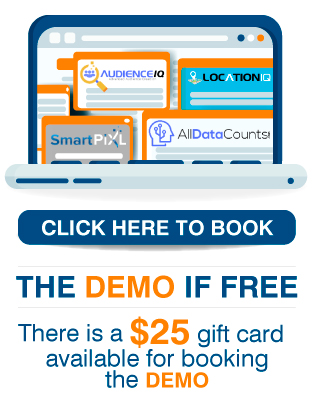Personalized Marketing Has Transformed From Generic Campaigns to Hyper-Targeted Experiences
Consumers expect relevant, timely, customized experiences; marketing personalization has evolved from a novelty to a necessity. What began as basic demographic segmentation has grown into real-time, predictive marketing powered by artificial intelligence, data analytics, and automation.
M1 Data and Analytics has been at the forefront of this transformation, enabling brands to harness robust audience data for deeply personalized campaigns that drive engagement, retention, and ROI.
From One-to-Many ne-to-One: A Brief History
- The Era of Mass Marketing (Pre-1990s): Marketing was primarily mass communication before digital technology. TV, radio, print, and billboard ads offered no personalization. Brands cast a wide net, hoping their message would resonate with as many people as possible.
- The Rise of Demographic Segmentation (1990s – 2000s): As customer databases and email marketing emerged, brands began targeting audiences based on simple segmentation – age, gender, income, or geography. Personalization was surface-level, like emailing someone by their first name.
- Behavioral Personalization (2010s): With the growth of digital platforms and e-commerce, marketers gained access to consumer behavior data – website visits, purchase history, and engagement patterns. This ushered in behavior-based personalization: think of product recommendations or cart abandonment emails.
- The Data Revolution and Real-Time Personalization (Late 2010s – Present): Advancements in big data, machine learning, and AI have redefined personalization. Brands now use customer data platforms (CDPs), predictive modeling, and real-time analytics to deliver personalized content, offers, and experiences at the moment of interaction.
Where Marketing Personalization Is Headed
- Hyper-Personalization with AI and Machine Learning
Today’s marketing tools analyze thousands of data points to predict user behavior, allowing marketers to tailor offers, content, and messaging down to the individual level. Proprietary audience segmentation tools like our AudienceIQ solution help businesses build particular audiences based on real-world behavior and purchase intent. - Privacy-First Personalization
Marketers must personalize without compromising trust as data privacy regulations (like GDPR and CCPA) grow stricter. This has led to innovations in anonymized data sets, contextual targeting, and first-party data strategies. - Cross-Channel Consistency
Personalization is no longer limited to one platform. Customers expect a seamless experience across email, social media, mobile apps, and offline. Using geofencing and location-based data, we help brands deliver contextually relevant experiences wherever their customers are. - Predictive and Prescriptive Personalization
Looking ahead, personalization won’t just react to user behavior – it will anticipate it. Predictive analytics will suggest what content or product a customer may want next, while prescriptive analytics will recommend the optimal channel, timing, and messaging to convert them. - Emotionally Intelligent Marketing
With the rise of sentiment analysis and emotional AI, personalization may soon include tailoring campaigns based on mood, tone, and emotional states, offering a more human-centered brand experience.
Consumers are bombarded with content; only the most relevant messages break through the noise. Personalization is no longer a “nice-to-have” – it’s a competitive advantage. Companies that fail to tailor their marketing risk losing engagement, loyalty, and revenue.
With M1 Data and Analytics’ tools, marketers can tap into precise, ethically sourced data to craft smarter, more effective campaigns that truly connect.

